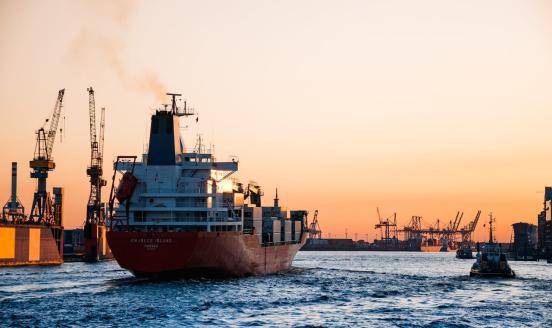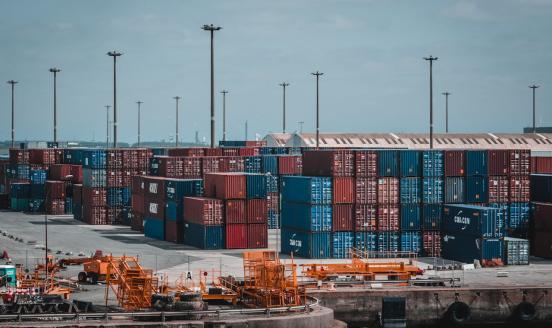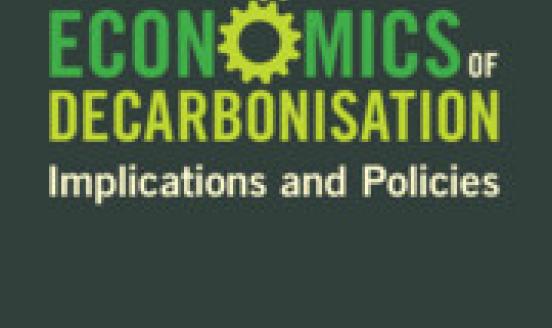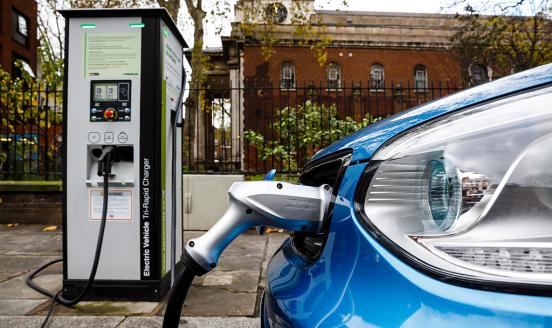Why Europe’s critical raw materials strategy has to be international
In ensuring supplies of critical raw materials, the European Union cannot rely on domestic measures alone.
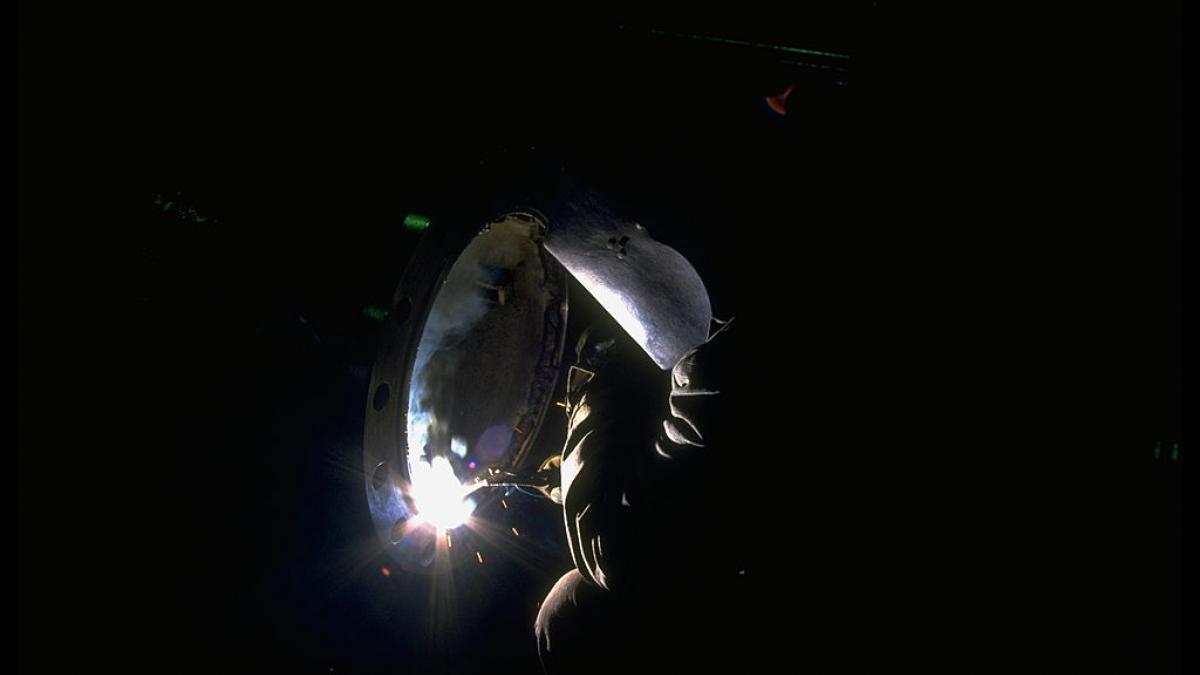
The Russian invasion of Ukraine and the ensuing energy crisis has made the European Union acutely aware of its exposure to geopolitical risks in key supply chains. Policymakers are now asking whether, in its drive to decarbonise its economy, Europe risks creating new dependencies. For example, when replacing an internal combustion engine car running on Russian fossil fuels by an electric vehicle with batteries made from Chinese minerals, will one dependency just be swapped for another?
Geopolitical risks from import concentration
The EU’s reliance on imported critical raw materials (CRM) is very different to its reliance on Russian fossil fuels. Unlike fossil fuels, which are consumed pervasively throughout the economy, CRMs are needed at small volumes as vital ingredients in specific manufacturing processes. For instance, lithium, cobalt and manganese are key inputs in electric-vehicle battery production. Rare earth elements and borates are needed to produce permanent magnets, essential elements in the electric-car motors and the generators of wind turbines. While indispensable for these manufacturing processes, the monetary value of the EU’s imports of individual minerals is rather small. In 2021, before the energy crisis, the EU imported €120 billion of fossil fuels from Russia alone. The value of EU imports of raw materials ranged between €4 billion for palladium to €5 million for beryllium. The risk therefore is not in the absolute (monetary) value of these imports, but the high degree of market concentration.
A good example of how such reliance can be exploited came in 2010. As part of a pressure campaign in response to the detention of Chinese fishermen operating in disputed waters, China banned rare earth exports to Japan. While Japan only imported around $154 million worth of rare earths, the ban threatened to cause substantial economic damage in several Japanese industries that were highly reliant on these minerals. At the time, around 98 percent of rare earth mining was done in China, giving the country a virtual monopoly on the minerals. The Chinese pressure campaign worked, and Japan was forced to release the fishermen (for a discussion see chapter 26 of Garver, 2016).
In the ongoing deterioration of the China-United States relationship, CRMs have again become a point of contention and a potential geopolitical weapon. China reportedly explored whether to ban exports of such minerals to the US 1 Sun Yu and Demetri Sevastopulo, ‘China targets rare earth export curbs to hobble US defence industry’, Financial Times, 16 February 2021, https://www.ft.com/content/d3ed83f4-19bc-4d16-b510-415749c032c1. . The US has explicitly excluded cars that use Chinese minerals from eligibility for electric-vehicle subsidies in the US Inflation Reduction Act, in a bid to reduce its dependence on Chinese minerals (see Kleimann et al, 2023).
The EU is exposed to such risks in relation to several minerals for which supply is concentrated in a few countries. The European Commission has identified 34 raw materials as ‘critical’ based on their economic importance and security of supply (European Commission, 2023). Figure 1 shows the origin of EU imports of all 34 of these CRMs. Using the Commission’s threshold of 65 percent for market concentration highlights eight elements as particularly problematic. Imports from China exceed this threshold for bismuth, cobalt ore, magnesium, manganese and strontium 2 The EU’s strontium imports total only €6 million. . Similar levels of import concentration can also be seen for borates and feldspar from Turkey, and beryllium from the United States.
Critical raw materials in global supply chains
Understanding the full extent of the EU’s exposure to bottlenecks in CRM production requires a comprehensive overview of the whole supply chain, from raw material extraction to the production of final products. In fact, raw material extraction is not where the highest degree of concentration is observed. The examples of electric vehicle and solar photovoltaic panel supply chains highlight the dominance China also at the refining and processing stages, and in the manufacturing of intermediate and final goods (Figure 2).
Reserves and mining of cobalt and lithium, two minerals essential for the electric-vehicle value chain, are quite dispersed. The potentially minable resources of lithium are diverse, with most of the deposits located in South America, and current mining taking place mostly in Australia and Chile (Hendrix, 2023). But 94 percent of the Australian production of lithium minerals goes to China for refining. A similar observation can be made for cobalt. The Democratic Republic of Congo, which accounts for 75 percent of cobalt mining, exports 99 percent of its cobalt to China. Furthermore, China imports 67 percent of the world’s supply of manganese ore, and exports 70 percent of the world’s refined manganese. Chinese refineries are currently unavoidable intermediaries in several key commodity markets, giving China monopoly power as the largest buyer of unrefined ores, and as the largest producer of refined metals.
Europe’s main exposure to CRMs is through its imports of manufactured products. In 2021, for example, the value of the permanent magnets imported by the EU was 12 times greater than the value of imports of all types of rare earths combined. The value of imported solar panels was 13 times greater than the value of imported silicon, and for imported lithium batteries versus imported lithium it was 75 times. This not only reflects the higher added value of goods further upstream in value chains, but is in large part driven by the fact that the EU does not produce many of these goods domestically. For example, only about 10 percent of EU demand for solar panels is met by domestic production.
Clean-tech production follows a well-established pattern in global value chains. In order to pay the high wages in Europe, the difference between input value (eg a CRM or an intermediate good) and output value has to be high as well. Industries in advanced economies therefore often outsource lower value-added manufacturing steps to emerging markets, from which they import intermediate inputs. As most early stages of manufacturing, notably those that involve CRMs directly, are low value-added, CRMs enter the EU single market already embedded in products. However, as long as mining or refining of CRMs are concentrated in single countries, even indirect exposure is still exposure to the risks that such concentration poses. Therefore, addressing CRM dependencies requires an international approach that seeks to diversify the supply of CRMs going directly into the EU and also to reduce the exposure of the EU’s main trading partners to CRM concentration.
The dual challenge of rapid demand growth and market concentration
The green transition will necessitate massive investment in new production capacity for clean-tech and the necessary minerals. Significant investment in domestic EU production, especially in batteries, will mean that production and direct use of raw materials can be expected to pick up. As the European automotive industry switches to electric-vehicle production, European demand for battery materials will increase substantially. The deployment of electric vehicles in Europe will increase EU demand for cobalt twofold and for lithium sixfold (European Commission, 2020). To meet this demand, massive investment in mining of these minerals will be necessary.
There is a risk that such investments will be linked to political alignment. Exclusive access to resources as a condition for investment has been alleged against the Chinese Belt and Road Initiative, which invest heavily in resource-rich countries (for a discussion of Chinese lending practices see Gelpern et al, 2021). Such conditionality could reinforce monopsony power, accentuate concentration and thus make CRM markets less resilient. But the investment challenge also provides an opportunity: new capacity could reduce the concentration and help to diversify markets. CRM markets are thus highly dynamic and likely to change in the near future.
The development of rare earth mining provides an interesting example. There has been significant diversification of mining capacities since the Chinese export ban in 2010 (Figure 3). The production of rare earths has doubled since then, with much of the growth happening outside China. The Chinese share of rare earth mining decreased from 98 percent in 2010 to 66 percent in 2022. However, China still dominates the next stages of production, from refining capacity (87 percent of which is located in China; IEA, 2022) to the production of permanent magnets (Europe imports 83 percent of its permanent magnets from China).
The situation is neither the same for all minerals nor static. For example, new investments in Australia seek to refine lithium domestically, instead of exporting the raw material to China 3 Yusuf Khan, ‘Lithium Industry Looks to Australia for Refining, Not Just Mining’, Wall Street Journal, 21 February 2023, https://www.wsj.com/articles/lithium-industry-looks-to-australia-for-re…. . Aluminium and copper, both also crucial metals for the green transition, provide examples of what well-diversified markets could look like. The EU imports aluminium from at least 18 different countries, with its largest supplier, Norway, representing 16 percent of total imports. Copper ore, meanwhile, comes to the EU from about 12 countries, with the largest supplier, Brazil accounting for 22 percent of imports. The EU imports refined copper from 15 countries, with Russia the largest supplier, accounting for 18 percent of imports. This widely diversified set of producers means that risks from local shocks or of geopolitical extortion are small in these markets.
Policy measures
An EU-level response to the challenges in CRM markets has been published in the form of a proposed Critical Raw Materials Act (CRM Act), issued by the European Commission 4 See European Commission press release of 16 March 2023: https://ec.europa.eu/commission/presscorner/detail/en/ip_23_1661. . The proposed act seeks to boost domestic production, refining and recycling, and would be flanked by free trade agreements (FTAs) containing CRM chapters 5 European Commission president Ursula von der Leyen has also mentioned a “critical raw materials club,” though it is not yet clear exactly what this would amount to. .
The goal of the CRM Act would be to meet 10 percent of domestic demand from domestic mining, 40 percent from domestic refining and 15 percent from recycling. To achieve these goals, the proposed CRM Act would make the issuing of permits to relevant industrial projects subject to a common EU time limit. The proposed act also includes provisions on supply chain monitoring, stockpiling and improving the recyclability of CRMs. Geological surveys and investigations of CRM contents in waste should identify domestic resources for mining and recycling of CRMs. The proposals on recycling and information gathering are interesting. But overall, the import substitution strategy that the Act pursues fails to tackle the deeper challenge that Europe’s primarily indirect exposure to CRM bottlenecks via global supply chains will not be resolved through domestic mining and refining.
Hence, the international measures will be crucial. As a domestic regulation, the draft CRM Act is vague on this. FTAs, such as those recently concluded by the EU with Chile and Australia, provide more concrete policies, such as new market access for EU investments. They could also prevent backsliding into export restrictions on CRMs, such as those imposed by Indonesia in 2020 on nickel 6 Fransiska Nangoy and Bernadette Christina, ‘Indonesia confirms bauxite export ban to proceed as scheduled’, Reuters, 21 December 2022, https://www.reuters.com/markets/asia/indonesia-announce-ban-exports-com…. . But unfortunately trade policy offers only very limited incentives to diversify imports. The EU already applies low tariffs on CRMs, leaving little scope for further tariff reduction in partner countries. A third of tariffs on base metals are already zero, and the average tariff rate for them is just 3.6 percent (see section 6 in Rietveld et al, 2022).
Given these constraints on trade policy, the EU’s main policy tools in this area will have to be investment through the Global Gateway (the EU’s foreign investment policy) and export credits to facilitate private investments abroad. The Commission’s CRM strategy mentions these tools, but it is to be seen how it will apply them. They should be used to promote investment in infrastructure and projects that diversify mining and – crucially – refining of CRMs outside the EU. This will require serious investment, not just by the EU itself but also by national governments. International cooperation with like-minded partners will help shoulder the burden.
Foreign commercial policy tools are more difficult to implement effectively and act less directly than domestic industrial policy. But the dual challenge of bringing the much larger quantities of CRMs needed for the green transition onto the market, while addressing the lack of resilience in global commodity markets, cannot not be met domestically. The EU should support a trade-policy environment and concrete investments abroad that diversify the supply chains not just for its domestic market. Given that all economies engaged on the path towards decarbonisation face the same investment challenge, the goal should be the development of liquid and diversified global commodity markets, much like existing markets for copper and aluminium, metals also central to the green transition.
References
European Commission (2020) Critical materials for strategic technologies and sectors in the EU, a foresight study, European Commission Joint Research Centre, available at https://rmis.jrc.ec.europa.eu/uploads/CRMs_for_Strategic_Technologies_and_Sectors_in_the_EU_2020.pdf
European Commission (2023) Study on the Critical Raw Materials for the EU 2023 – Final Report, available at https://single-market-economy.ec.europa.eu/publications/study-critical-raw-materials-eu-2023-final-report_en
Garver, J. (2016) China’s Quest – History of Foreign Relations of the People’s Republic of China, Oxford University Press
Gelpern, A., S. Horn, S. Morris, B. Parks and C. Trebesch (2021) ‘How China Lends: A Rare Look into 100 Debt Contracts with Foreign Governments’, Economic Policy, eiac054
Hendrix, C. (2023) ‘India's lithium discovery could boost green energy but creates problems in the region’, Realtime Economics, Peterson Institute for International Economics, 16 February, available at https://www.piie.com/blogs/realtime-economics/indias-lithium-discovery-could-boost-green-energy-creates-problems-region
International Energy Agency (2022) Critical Minerals Policy Tracker, available at https://www.iea.org/reports/critical-minerals-policy-tracker/ensuring-supply-reliability-and-resiliency#abstract
Kleimann, D., N. Poitiers, A. Sapir, S. Tagliapietra, N. Véron, R. Veugelers and J. Zettelmeyer (2023) ‘How Europe should answer the US Inflation Reduction Act’, Policy Contribution 04/2023, Bruegel
Rietveld, E., T. Bastein, T. van Leeuwen, S. Wieclawska, N. Bonenkamp, D. Peck, M. Klebba, M. Le Mouel and N. Poitiers (2022) Strengthening the security of supply of products containing Critical Raw Materials for the green transition and decarbonisation, Publication for the Committee on Industry, Research and Energy (ITRE), European Parliament, available at https://www.europarl.europa.eu/RegData/etudes/STUD/2022/740058/IPOL_STU(2022)740058_EN.pdf
